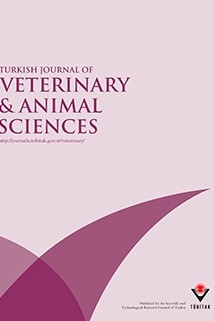
Turkish Journal of Veterinary and Animal Sciences
Yazarlar: Ramazan ÇÖL, Alicia MONTGOMERY, Maria Cristina IAZBIK, Ashley DEFELICE, Paulo Vilar SAAVE, Guillermo COUTO
Konular:-
DOI:10.3906/sag-1206-82
Anahtar Kelimeler:Key words: Thrombelastography,Hemostasis,Viscoelasticity,Cats
Özet: Thrombelastography (TEG, Haemoscope Corp., Niles, IL, USA) allows for a global evaluation of the hemostatic system; while conventional coagulation tests typically evaluate only one part of the coagulation system, TEG simultaneously examines the interaction between platelets, clotting factors, the fibrinolytic system, and clot retraction mechanisms. Since its development, TEG has been widely employed in human clinical medicine and research, but has only recently gained popularity in veterinary medicine. The purpose of this study was to establish TEG reference ranges in healthy cats using the citrated native technique. In this study, 31 clinically healthy cats were evaluated. We sampled healthy adult cats based on the absence of clinical signs of illness, normal physical examination findings, a complete blood count, hemostasis profile results, and no previous history of bleeding disorders. The cats had 2 distinct tracings: a 'normal' tracing similar to that obtained in other species, and a 'high lysis' tracing. The percent of lysis at 60 min (LY60) was significantly higher and the percent of lysis at 60 min after MA is reached (CL60) was significantly lower in the 'high lysis' group (P < 0.001 for both). Cats in the 'high lysis' group also had a significantly shorter reaction time (P = 0.02). Based on the results, citrated native TEG may provide valuable information on global hemostasis in cats. This technique has a high coefficient of variation for the reaction time, kinetic time, and LY60 parameters, likely due to platelet retraction. It should be useful for detecting hypo- and hypercoagulable states in cats with hemostatic disturbances.